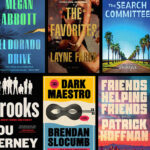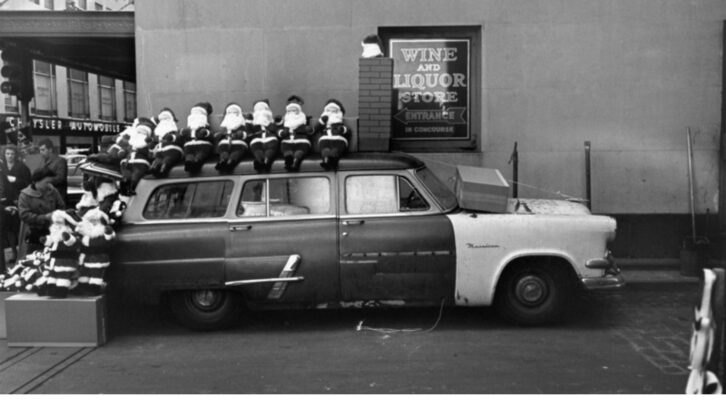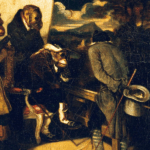Around a hundred years ago, murder was big business. There were stabbings in vicarages, poisonings at village fetes, untimely deaths in luxury hotels—and Heaven help anyone invited to spend Christmas in an isolated, snow-bound manor house. This was the golden age of detective fiction, the inter-war years when authors like Agatha Christie, Ngaio Marsh, John Dixon Carr, and Dorothy L Sayers were producing their finest work.
The most successful British authors formed a society called The Detection Club where they met to talk over their plotting and research issues. As a crime writer I’d love to travel back to one of those dinners and listen to Christie, Chesterton and Sayers debating the minutiae of poisons, comparing red herrings and, if they’re anything like author groups today, moaning about their publishers.
But then, like most literary trends, the golden age passed. The postwar era dismantled many of the social conditions which had inspired these novels, making them feel quaint and outdated. Readers were demanding grittier, more realistic plots and moved away from the intellectual puzzle which sat at the heart of many of these books. One vocal critic was Raymond Chandler who, in The Simple Art of Murder launched a scathing attack on the genre as fake and formulaic.
But despite numerous attempts on its life, the mystery novel never really died. Seventy-five years after Chandler’s essay, Agatha Christie is still one of the biggest selling authors of all time—up there with God and Shakespeare. And Then There Were None alone has sold over a hundred million copies and fresh adaptations for stage and screen keep pulling in new fans.
What’s more, scores of contemporary authors are following in her footsteps. The cozy crime section of every bookstore is overflowing with Christie-inspired offerings. The Knives Out movies are studded with golden age tropes – gifted detective, privileged suspects and even the classic showboating-sleuth-explains-it-all denouement.
Richard Osman’s The Thursday Murder Club—essentially a whole gang of Marples cracking a case—has sold over one million copies. Only Murders in the Building has won forty-three awards.
So why, in this culturally-literate, story-savvy society, where we are always demanding the next shiny new thing, do we still love these old-fashioned mysteries?
Perhaps Chandler was right, perhaps there is a formula. There is no doubt that the golden age authors created one, whether they wanted to or not.
This was the dawning of the mass-market paperback. Literacy rates were high, paperbacks were affordable, more people had electric lighting and could finally sit up all night reading (imagine the joy!) People wanted more and more books and these writers kept producing them.
Think of it as the literary equivalent of the space race. During a very short, very intense creative period, the authors discovered the things that worked and the things that didn’t. Those things still ain’t broke today.
Readers pick up a closed-circle mystery in the vein of And Then There Were None knowing what they’re going to get. A small cast trapped together. A killer. Tense drama with flawed characters needling each other. Accusations flying like bullets. That’s why they chose the book in the first place.
But then, beyond that basic formula, come the surprises. The secrets, the characters, and the way they interact. That’s what keeps people reading.
It’s one of the things I love about the human brain—give the same idea to 100 different writers and they’ll solve the problem in a hundred different ways, taking the so-called formula in a different direction every time. Crime authors tread a fine line between satisfying the reader’s expectations and surprising them, and it’s one of the most interesting challenges a writer can have.
When I first started writing crime fiction I was uncomfortable about using tropes created by such legendary figures. Would people think I was trying to be Agatha Christie? And shouldn’t I attempt to be, like, edgy?
But then I stopped thinking like a writer and started thinking like a reader. Do I love amateur detectives? Yes! Do I love characters with dark secrets cracking under pressure? Yes! Do I love that bit in And Then There Were None where a figurine is mysteriously removed every time someone is bumped off? Yes I do!
We all grew up reading these classic crime stories—many of us when we were unsuitably young—and when we see a nod to Christie or others in the writing it’s like a secret handshake between reader and author: You love this stuff, I love this stuff. You’re in safe hands.
And it’s because of that link between reader and author that the genre endures. In the heyday of the Detection Club, member Ronald Knox came up with the ten commandments of the whodunit.
The culprit had to be mentioned in the early part of the story, the detective had to follow clues, rather than leaping to his conclusion through “unaccountable intuition.” Clues must be shown to the reader as they are found. Not more than one secret passage per story, and absolutely no secret identical twins.
In short, the majority of the rules are about fair play. The authors were inviting readers to play along, to solve the puzzles, and giving them a decent chance of figuring out the answers.
The oath of the club, as written by Dorothy L Sayers, reads: “Do you promise that your detectives shall well and truly detect the crimes presented to them using those wits which it may please you to bestow upon them and not placing reliance on nor making use of Divine Revelation, Feminine Intuition, Mumbo Jumbo, Jiggery-Pokery, Coincidence or Act of God?”
And that is the true reason that the golden age-style detective fiction has endured. There’s a contract between author and reader. The reader has as much a chance as the detective to crack the case because all the clues are there for them to see.
I have broken a few of these rules over the years—ghosts play an incredibly large part in my next book, which I’m sure counts as both mumbo jumbo and jiggery-pokery. But I abide by the spirit of them. I promise fair play, clues in plain sight and a motive which has been signaled throughout the book.
Yet I’ll attempt to surprise them anyway, because that’s the game. And we are all—authors and readers—happy to keep playing it for years to come.
***


















